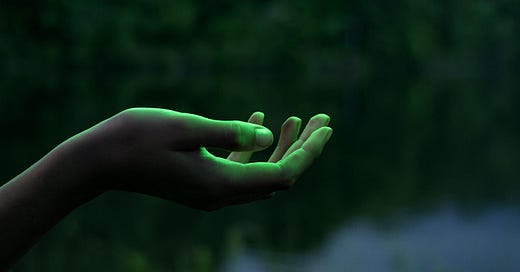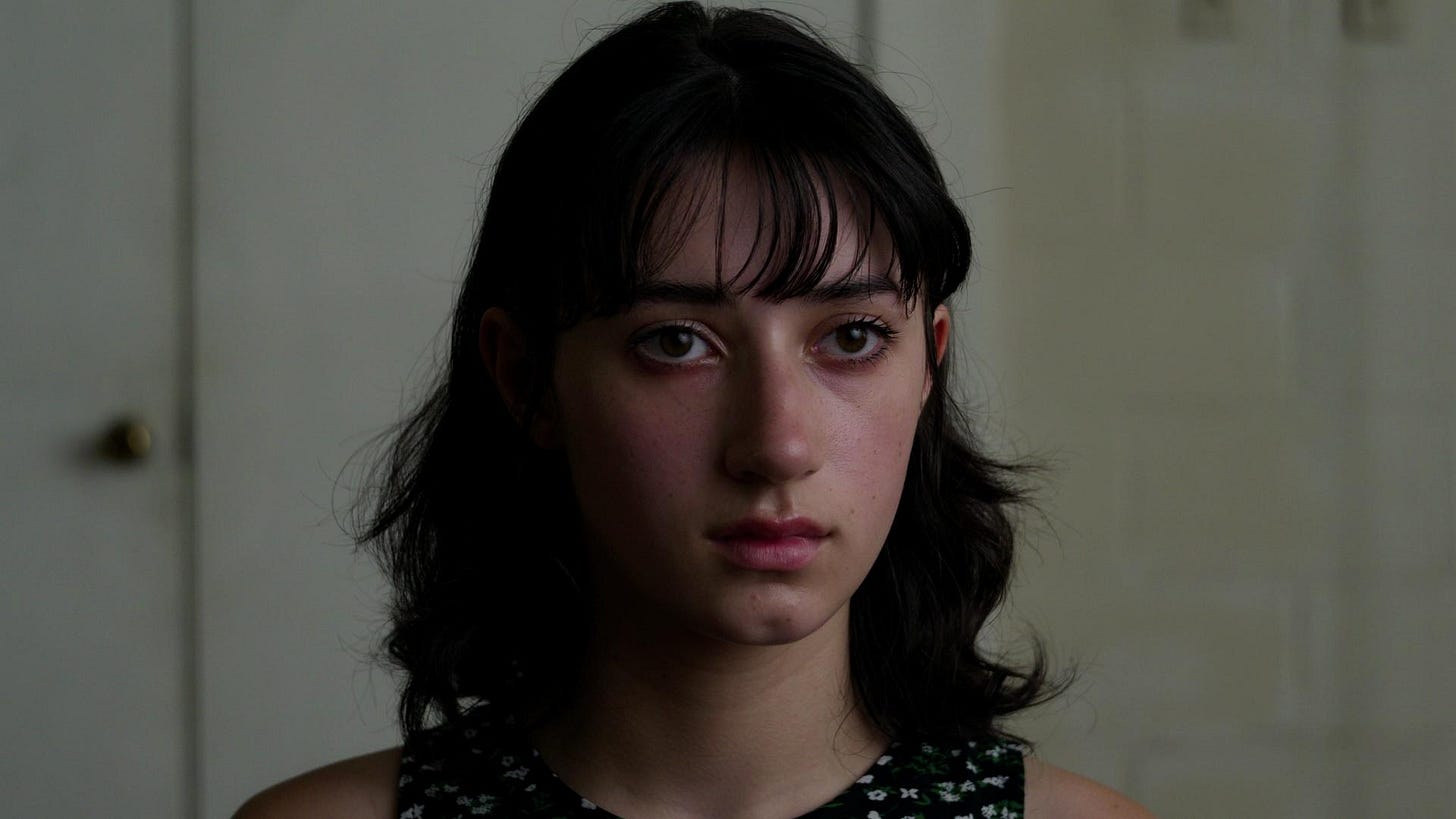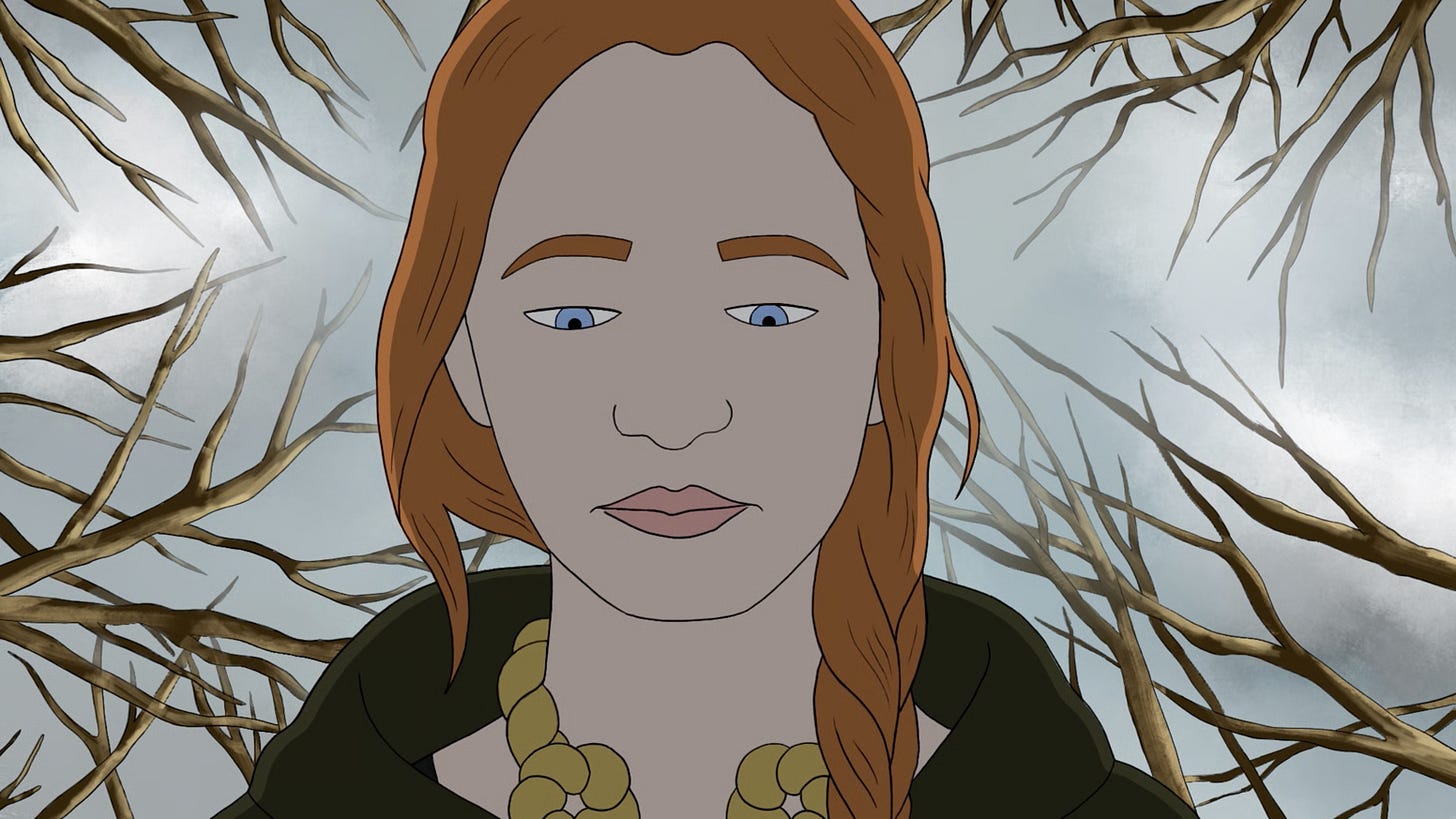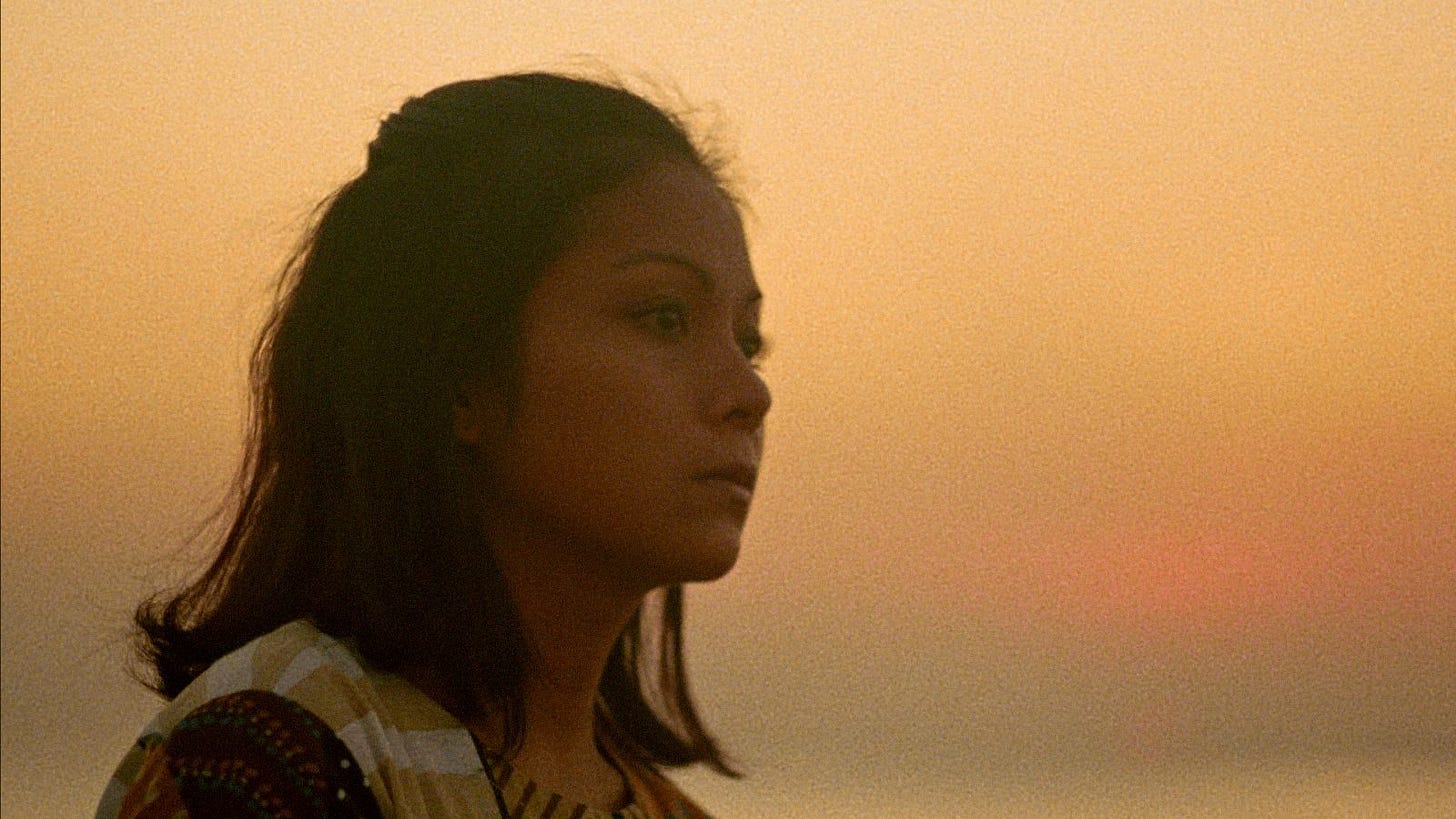The Latest: The World Drops Dead, April-May Movie Round-Up
Praise for Brandon Colvin's new live-action/animated double bill, along with short takes on a bunch of movies I have seen since April.
Hello again, my friends.
I have let an unacceptably long span of time pass since the last MTWZ newsletter. I don’t enjoy reading others apologize for tardiness (I was a TA for many years), so I won’t ask my beautiful and brilliant subscribers to wade through a long and twisted mea culpa.
Since mid-March, I have been preoccupied with my new job in campus administration. I work at UW-Madison’s Center for Interprofessional Practice and Education, where I develop learning opportunities for health science students. By now, I have acclimated to the new milieu (i.e., learned a lot of acronyms) and feel at home in the job. Good colleagues will do that. If I ever get around to writing a piece about The Pitt, I will elaborate more on “interprofessional education” and my specific line of work. Or I’ll find some other reason!
In this context, writing time has become a precious commodity, one that I am summoning the discipline this summer to accrue and put to use. That said, I intend to dedicate most of that time to scholarly projects that desperately need to see the light of day. So, while I can’t promise to resume the weekly pace of MTWZ newsletters, I will aim to produce at least two a month this summer.
Today’s MTWZ issue leads with a review of Brandon Colvin’s new drama The World Drops Dead and accompanying animated short When the Moon Returns. You probably haven’t seen either yet, so let me be clear that these two films get an unqualified recommendation from me. I say that as a friend of the filmmaker, yes, but also as a terrible bullshitter. Keep an eye out for The World Drops Dead and When the Moon Returns as they travel the American film festival circuit. Some smart boutique distributor needs to acquire this moody and mysterious double bill!
This newsletter concludes with a bunch of stray thoughts/assertions on movies I have seen since April.
The World Drops Dead (dir. Brandon Colvin, 2024) + When the Moon Returns (dir. Brandon Colvin, 2024)
Note: This review discusses a depiction of suicide. Spoilers for the first ~30 minutes of The World Drops Dead follow.
Over the past decade-plus, the term “worldbuilding” has become so captured by the C-suite (its leaders and many, many aspirants) that it’s easy to forget that the acts described therein also fuel serious art, after all. Consider an auteur of modest means, working in a quote-unquote “realistic” register, like Hong Sang-soo: Yes, he drafts detailed, plausible character dialogue and backstory, but the true genius of his work lies in how he manages to invoke the metaphysical and even the supernatural through simple techniques, like repeating similar (the same?) events or throwing in an unannounced temporal ellipsis. These low-tech devices, born of constraints, generate a world of aesthetic, moral, and narrative possibilities that a single film like Walk-Up (2022) can hardly contain, and that is reconfigured anew in each film across the Hongian “multiverse.”1
Such form-focused worldbuilding comes naturally to Brandon Colvin, who is one of the more rigorous and searching filmmakers on the American independent scene today. His previous features Sabbatical (2014) and A Dim Valley (2020) are generically dissimilar—the former was billed as a relationship drama, the latter a stoner comedy—but both share an exacting style of deliberate character movement, ample “dead time,” and eye-catching color schemes that are just-so artificial. The off-kilter feeling of these worlds conveys, in its own ways, Colvin’s recurring interests in cloistered communities, emotional anguish, and the search for a higher power.
Colvin’s ambitious new double bill—narrative feature The World Drops Dead and its accompanying animated short When the Moon Returns—clarifies and grows this vision, by novelly bridging the realms of reality and fantasy. Produced at “microbudget” scale,2 the two films together illustrate how many affecting, still-fresh approaches there are to genre, especially by artists working outside the Hollywood system.
The World Drops Dead follows Claire (an excellent Yumna Jane) as tragedy befalls her family and their small Quaker community. The film begins at home with Claire and her clearly crestfallen father, Mark (Colvin, in a fine and intense acting debut). At a gathering for unprogrammed worship, Mark declines to speak, despite catching the eye of his fellow Quakers when he jots down some seemingly divine word. Not long after, he takes his own life, in an explicit and upsetting scene. Claire is the first to encounter Mark’s body, and a reanimated vision of his corpse (I call him, glibly, “Dark Brandon”) begins haunting Claire in increasingly corporeal ways. (These hauntings are always accompanied by Colvin and Aaron Whitt’s droning, horror-tinged score.)
Meanwhile, the loss of Mark frays at everyone else in Claire’s orbit, including her fragile mother (Sanam Erfani) and explosive brother (Micah Juman). Perhaps the most poignant scene of the film centers on a monologue delivered by friend of the family Paul (Lawrence Ratliff), who laments Mark’s silence before his suicide: “I thought he had something to say.” The sense of powerlessness one feels watching a loved one suffer is among the film’s key concerns.
Between its thematic emphases and handsome yet ultra-low-budget production, The World Drops Dead diverges from the norms of contemporary independent cinema. It was filmed in and around Tuscaloosa, Alabama, where Colvin, the film’s producer/art director Nora Stone, and its feline all-star Annie live.3 While the film does not flaunt its Southern roots, it features some gorgeous gothic-lite imagery;4 as Paul’s monologue indicates, it also astutely depicts a character trait particular to the region where everyone keeps close—and silent—eye on one another.
Compared to Colvin’s playful and erotic previous feature A Dim Valley, The World Drops Dead is severe and at times violent. Outright bloodshed fills the accompanying short When the Moon Returns, which atypically follows the feature in recommended viewing order. The short jumps back centuries to the days of the druids and depicts a phantasmagoric series of sacrifices that lead young woman Deidre into a spirit realm. There, she confronts pagan deities and, maybe, the spirit form of her dead mother.
Little connects The World Drops Dead and When the Moon Returns “canonically” except for the protagonist’s search for their dead parent, as well as the key visual motif of an upturned palm. This gesture structures Claire and Deidre’s encounters with the supernatural forces, and undead parents, in their midst. The dense cosmology of When the Moon Returns is rife with potentially sinister or otherwise cosmic implications for Claire’s journey in The World Drops Dead.
In bridging microbudget drama with animated fantasy, Colvin joins the two aforementioned kinds of worldbuilding: the auteurist integrity of pursuing a formal and philosophical project, on the one hand, and the fictive engineering of supernatural beings and epoch-spanning lore. The union works, in large part, because the connections between the two are underdetermined and largely tacit. Each film stands on its own, but together they linger in the mind and enlarge one another.
Movie Round-Up (April-May 2025)
Sinners (dir. Ryan Coogler, 2025): I don’t agree with those who preach this film’s greatness as axiomatic, but I still had a blast. Not enough ink has been spilled on the fact that [SPOILER] the last shot before the final credits is an IMAX close-up of Buddy Guy, dressed in vampire-inflicted scar tissue.
No Country for Old Men (dir. Joel and Ethan Coen, 2007): First viewing in nine years, off the new Criterion 4K. Now old, I (32M) love it more than ever. A perfectly edited film, as you know.
Amadeus (dir. Miloš Forman, 1984): Somehow I never watched this, start to finish, until the UW-Cinematheque’s screening in April. I didn’t expect it to have so many relaxed and silly scenes; I did expect Old Salieri’s frame narration to be as obvious and overdetermined as it was. All in all, pretty good for a Best Picture winner.
Bona (dir. Lino Brocka, 1980): A rough, beautiful, viscerally satisfying film—my major discovery of April. I elaborate why in a capsule review on Letterboxd.
The Pit (dir. Lew Lehman, 1981): Loved the Troglodyte costumes in this perverse “bad seed” horror, shot cheaply in Beaver Dam, Wisconsin.
Sleepaway Camp II: Unhappy Campers (dir. Michael A. Simpson, 1988): No one told me about the one where Bruce Springsteen’s sister (playing a traumatized transgender woman) murders twenty people. A new problematic fave!
Laughing Gravy (dir. James W. Horne, 1931): This hilarious Laurel & Hardy short stands in for the Cinema 16 Anthology program my better half Matt St. John programmed for the UW-Cinematheque. Great job, Matt! Seeing archival prints of Shirley Clarke, Bruce Conner, and other experimental films was cool, too.
Thunderbolts* (dir. Jake Schreier, 2025): For all the claims of competence, this is still tryhard and deficient in my book. The baffling choices across Captain America: Brave New World kept me transfixed by comparison.
Beauty and the Beast (dir. Juraj Herz, 1978): Gorgeous and creepy. Baroque, plot-lite horror of this sort goes down easier when I don’t have to worry about the story—and you, dear reader, already know the plot as well as me. I recommend tracking this one down!
Twilight (aka Szürkület) (dir. György Fehér, 1990): Some unreal, low-key cinematography aside, I unfortunately found this a snooze.
Jurassic Park (dir. Steven Spielberg, 1993): One of the MTWZ sacred texts.
Final Destination Bloodlines (dir. Zach Lipovsky and Adam B. Stein, 2025): A delightful time at the movies. I did, in fact, literally scream during the lead-up to the lawnmower gag.
The Swimmer (dir. Frank Perry, 1968): Second viewing, superior to the first. Its genuine surreal effect comes from its narrative ellipses, while its depiction of behavior is disturbingly grounded. They don’t make middlebrow camp like this anymore—they didn’t back then, either.
The Summer With Carmen (dir. Zacharias Mavroeidis, 2023): I did not know a thing about this gay, Greek, Rohmerian comedy until Matt rented the Blu-ray from our local video store. You probably haven’t heard of it, either. While its metacinematic flourishes can be a bit precious, I especially recommend watching this if you 1) are gay and 2) have a cute dog with separation anxiety.
3 Bad Men (dir. John Ford, 1926): The titular men queen out over Olive Borden when they aren’t brawling one another or harassing an effete dandy. For this reason, 3 Bad Men is one of the more revealing glimpses into John Ford’s whole psychosexual thing, atop of just being a fun hang. Watched at the UW-Cinematheque with live piano accompaniment by Tha God David Drazin.
Mission: Impossible - The Final Reckoning (dir. Christopher McQuarrie, 2025): Interesting to compare with Final Destination Bloodlines, whose disembodied antagonist also possesses an intra-franchise omniscience that drives the hero to act against their own impulses. Anyway, the spatial integrity of M:I’s submarine and biplane sequences, with their 360 degrees of peril, blew me away.
Nothing But a Man (dir. Michael Roemer, 1964): Masterpiece. RIP King.
For more on Hongian metaphysics, I recommend Lawrence Garcia’s excellent MUBI Notebook piece from last year, “Ways of Worldmaking: Hong Sang-soo’s Late Period,” as well as Dennis Lim’s essential book on Tale of Cinema (2006).
I estimate the combined budget of the two films is well under $50,000.
Colvin and Stone’s frequent collaborators Tony Oswal and Pisie Hochheim return as producers, as does cinematographer Cody Duncum.
E.g., an amazing shot of a deer in a deep, overgrown forest, which according to Colvin was captured by chance.








